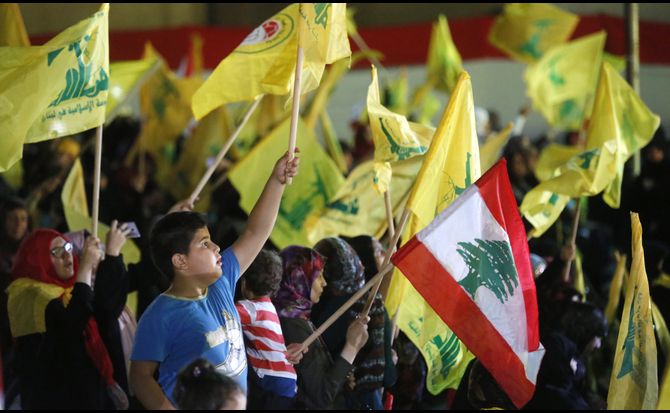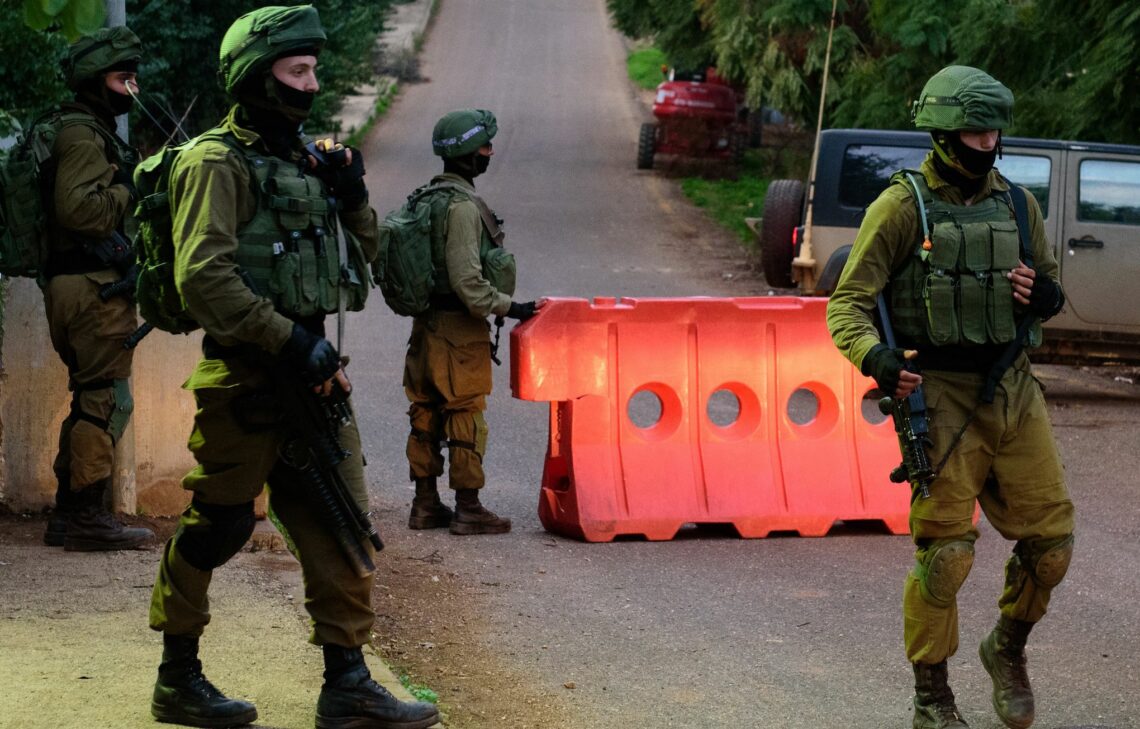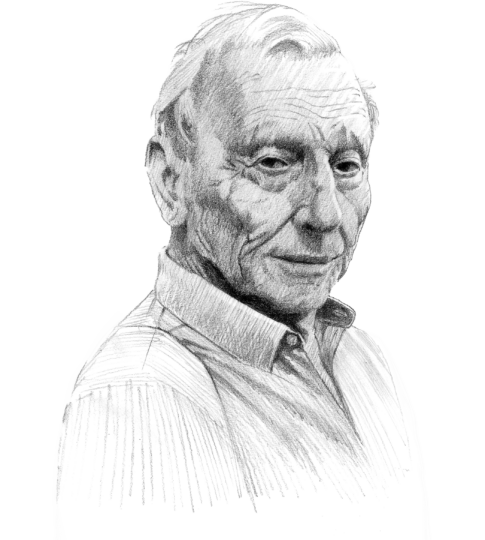Israeli view: Hezbollah puts Lebanon at risk
Since 1982, the Shia Hezbollah movement has turned the Lebanese-Israeli border into one of the most volatile in the region. After its stunning success in last year’s elections, Hezbollah would bear responsibility for another possible confrontation with Israel, for which Lebanon would pay a steep price.

In a nutshell
- With help from Tehran, Hezbollah has made the Israel-Lebanon border volatile for more than three decades
- The terror organization continues to threaten Israel and has waded into the Syrian civil war
- After success in 2018 elections, Hezbollah now bears responsibility for running the country and for the blowback from any confrontation with Israel
For many years, the border between Lebanon and Israel was peaceful. There were no territorial claims on either side, and it was often predicted that Lebanon would be the first Arab country to make peace with the Jewish state. However, following the creation of Hezbollah by Iran in 1982, that border has become one of Israel’s most volatile frontiers, a situation not likely to change for the foreseeable future.
Financed and armed by Tehran, the Shia Hezbollah movement is branded a terror organization by major Western countries such as the United States, Canada, the Netherlands, and the United Kingdom, as well as Japan, the Arab League and the Gulf Cooperation Council. Hezbollah has never ceased to threaten to attack and destroy Israel.
Northern threat
Lately, the tension has increased another notch, prompting the new head of the Israeli Defense Forces’ (IDF) Ground Forces, Maj. Gen. Yoel Strick, to issue a warning on April 18. According to him, Hezbollah is still planning to breach the border and invade the Galilee region; should it attempt to do so, Lebanon would suffer a death blow. “In the next war,” Gen. Strick added, “it would be a mistake for us to distinguish between the state of Lebanon and Hezbollah, since Hezbollah is a political actor and part of the government.”
The warning came in the wake of the discovery of no less than six underground tunnels in the course of “Operation North Shield” conducted by the IDF. The tunnels, Israeli officials asserted, were built from Lebanese territory under the border to let hundreds of Hezbollah fighters into Israel, take it by surprise and capture the northern city of Metula and surrounding villages.
This was supposed to be the spearhead of a Galilee invasion, Hezbollah’s stated objective for many years, along with simultaneous missile launches from Lebanon and Syria, other ground raids, and attacks on Israel offshore gas rigs. This threat by Hezbollah has turned Lebanon, against its own interests, into a prime target for Israel’s army.
Rising power
Israeli-Lebanese relations began turning sour after King Hussein of Jordan threw Yasser Arafat and his Palestine Liberation Organization out of the country, following the 1970 Black September rebellion. Mr. Arafat and his fedayeen fighters moved to Lebanon, and soon came the Lebanese civil war, leading to Syrian intervention and a virtual takeover of the country in 1976.
Those troubled times facilitated Iran’s intention to establish Hezbollah as a proxy, furthering its goal of eliminating the Jewish state. The once-peaceful border became a conflict zone. An endless series of terror attacks led to retaliatory raids by Israel, escalating into full-blown wars: the first, in 1982, drove the PLO out of Lebanon; then came confrontations with Hezbollah in 1993, 1996 and 2006.
Hezbollah is the Lebanese kingpin, able to force its will on the government, with a powerful army at its disposal.
Meanwhile, the terror organization was pursuing another objective: to become a major player in the Lebanese political arena. Several members were elected to the parliament as early as 1992. From there, Hezbollah grew from strength to strength, together with its two allies, the Shia Amal party and the Free Patriotic Movement of Michel Aoun, a Maronite Christian and the country’s president. By May 2018, Hezbollah and its two allies had won 72 out of a total of 128 seats in parliamentary elections.
It took nine months of protracted negotiations to form a government, with 18 of the 30 ministers from the Hezbollah camp and 12 belonging to the Sunni faction of Prime Minister Saad al-Hariri. In short, Hezbollah is the Lebanese kingpin, able to force its will on the government on any issue, with a powerful and threatening army at its disposal. On the other hand, it has to deal with major political and economic issues.
Since the 2006 confrontation with Israel, which ended with UN Security Council Resolution 1701, the organization continued, with Iran’s help, to strengthen its political and military bases. It repeatedly violated the terms of that resolution, which stipulated that the Lebanese government should control all its territories through the Lebanese army and that no other forces would be allowed to bear arms. The United Nations Interim Force in Lebanon (UNIFIL) would receive additional soldiers and supervise the resolution’s implementation in the south of the country, from the Litani river to the so-called Blue Line, a 2000 UN border based on the territories held by the French and the British according to the Sykes-Picot Agreement.
Resolution 1701 reiterated the stipulations of Security Council Resolution 1559 from 2004, which ordered all militias to disarm. Hezbollah not only did not comply – it built military infrastructure throughout the country, including in areas under UNIFIL supervision. Thousands of missiles aimed at Israel were “hidden” in Shia villages, in or near civilian houses and public buildings. This vast operation was carried out at night or even in broad daylight, with plain-clothed Hezbollah militants blocking (sometimes forcibly) UNIFIL patrols. This was done with the cooperation of the Lebanese army, which bars those patrols from entering Shia villages, allegedly because of the “sensitive sites” there. UNIFIL peacekeepers, though bearing arms, refrain from insisting on doing their jobs.
A new front
In 2013, ordered by Iran to intervene in Syria on behalf of President Bashar al-Assad, Hezbollah acquired some much-needed military experience. It transitioned from small-group guerrilla warfare to larger units working with tanks and artillery, and capable of mastering combat strategy. It also attempted to build terror infrastructure on the Syrian part of the Golan region, to launch attacks against Israel from Syria without exposing Lebanon to retaliation. Iran prepared military barracks for the Shia militias it intended to deploy in the region, but Israel reacted quickly, obliterating the barracks and killing local Hezbollah leaders and their Iranian advisers.
Inside Lebanon, Iran helped its proxy increase the number of its missiles and its ability to produce them locally. Hezbollah now has an estimated 150,000 missiles, most of them without a guidance system, though efforts are ongoing to make them more precise. Iran is ceaselessly trying to send guiding systems, and the means to make them, through Syria. It seems to have built a factory for that purpose near the Russian Khmeimim Air Base in Latakia, Syria, relying on Israel’s reluctance to strike such a sensitive location.

In his remarks at the UN General Assembly last September, Israeli Prime Minister Benjamin Netanyahu revealed the existence of three hidden factories in Lebanon and their exact location in the heart of Beirut. United States Secretary of State Mike Pompeo had been given details about a fourth site before his visit to Lebanon in mid-March, and he raised the issue with Lebanese leaders. During a press conference with Lebanese Foreign Minister Gebran Bassil, Mr. Pompeo stated that “Lebanon and the Lebanese people face a choice: bravely move forward as an independent and proud nation or allow the dark ambitions of Iran and Hezbollah to dictate your future.”
Israel does not have the option to wait for that decision. It must reinforce its defenses, stop Iranian assistance coming from its Syrian outposts and thwart every attempt at a surprise attack. Discovering and neutralizing the tunnels marked a success of that policy. A massive effort to protect and bolster the border, undertaken several years ago, is still ongoing.
To block terrorists and prevent a potential invasion attempt by Hezbollah forces backed by tanks and artillery, different types of obstacles are being built along the border according to the type of terrain: a high wall, a smart barrier, doing away with vegetation and trimming trees, and even cutting small hills to create into a natural wall. This is done on the Israeli side of the border, which did not stop Hezbollah militants and even Lebanese soldiers from trying to disrupt work in progress by confronting Israeli soldiers. In 2010, a Lebanese army patrol opened fire on the commander of the force engaged in trimming trees, killing him. The IDF returned fire and killed four soldiers, and the force went on working. Since that incident, the Lebanese army has been viewed by the Israelis as hostile and dangerous.
Regarding the Hezbollah-Iran threat from Syrian territory, Israel reportedly carried out hundreds of bombing raids on Iranian military installations, from a factory producing precise missiles to launching facilities for missiles and drones, hangars where precision missiles are stocked prior to their transfer to Lebanon, and so-called Popular Shia militias encampments. Iran’s efforts came to an almost complete halt, leading Tehran to move the missiles to Iraq.
Border drawing
Because of the dominant position of Hezbollah, two issues remain at stake between Israel and Lebanon. The first is the demand that Israel returns the so-called Shebaa farms area to Lebanese sovereignty. There was no clear demarcation line for that area, situated on the lower slopes of Mount Hermon where Lebanon meets Syria and populated mostly by nomadic tribes.
In 1967, it was considered part of Syria and as such passed under Israeli rule after the Six Day War. In 2000, when Israeli forces withdrew from the security zone they had established in Southern Lebanon following the 1996 confrontation, there was no longer a territorial dispute between the two countries and therefore Hezbollah could not pretend that it was needed. But a high-ranking Lebanese officer, a supporter of Syria and Hezbollah, claimed that the Shebaa farms were Lebanese, not Syrian. Arab states followed suit and demanded its ”return.” A territorial conflict was thus created, giving legitimacy to Hezbollah as Lebanon’s defender.
In Syria, Hezbollah transitioned from small-group guerrilla warfare to larger units working with tanks and artillery.
The UN, though considering the area “occupied territory,” refrains from specifying whether it is Lebanese or Syrian. It is worth noting that in an April 29, 2019 interview, prominent Lebanese Druze leader Walid Jumblatt declared that the Shebaa area was not Lebanese; furthermore, Syria has so far refused to confirm that the area belonged to Lebanon.
The second issue is the delimitation of the maritime border between Lebanon and Israel and their respective exclusive economic zones. This is of a more urgent nature, following the discovery of huge gas fields in the eastern part of the Mediterranean Sea. There is a disputed area known as Block 9, of some 860 square kilometers, and until recently Hezbollah torpedoed every attempt to reach a solution. U.S. Secretary of State Pompeo offered during his March 2019 visit to Lebanon to revive the failed American mediation efforts initiated in the previous year by his predecessor, Rex Tillerson. On April 23, 2019, the Speaker of the Lebanese parliament, Nabih Berri, announced during a meeting with UNIFIL commander Stefani del Col that Lebanon was prepared to renew efforts to search for solutions under UN auspices.
The situation today
The United States is now pressuring the UN with accusations that the organization failed in its mission to implement Resolution 1701. At a Security Council meeting on March 26 (also in 2019) the American representative harshly criticized UN reports that omitted Hezbollah stockpiling weapons in South Lebanon. The U.S. demanded that UNIFIL, whose main function is to prevent any armed forces from developing in the region other than the Lebanese army, enforce the resolution in full. Secretary of State Pompeo reiterated the same warning issued during his visit to Lebanon and Washington announced a $10 million reward for information on Hezbollah’s financing sources.
With the tightening of economic sanctions on Iran and the branding of the Guardians of the Revolution as a terror organization, Tehran’s assistance to Hezbollah – once as high as $700 million every year – has greatly diminished. The cash-strapped organization is asking for public donations, putting up collection boxes throughout Beirut and asking on social media for citizens to give as much as possible to “the organization which protects Lebanon.”
Tehran’s assistance to Hezbollah – once as high as $700 million every year – has greatly diminished.
The discovery of its main strategic asset, the tunnels which were to provoke panic in Israel at the onset of the long-planned invasion, rendered a major blow to Hezbollah. Hassan Nasrallah, its leader who is usually prompt to react to developments remained quiet for months. When he did speak, it was not to comment about the loss of years of work carried out in utmost secrecy at a high cost, but to try to minimize what had happened and to mock Israel for its “alleged” success. He chose not to address the consequences of Iran’s relative failure to entrench itself in Syria and establish a terror base to target Israel with large-scale operations.
Hezbollah success in the 2018 elections was also a double-edged sword. The terror organization is now involved in running the country and will be held accountable for its economic and social development. An armed confrontation with Israel would bring massive destruction and set back Lebanon for many years. Indeed, Mr. Nasrallah hastened to refute allegations that he would start a war in the summer and emphasized that there was no such plan. Nevertheless, the boundless hatred of Iran and Hezbollah towards the Jewish state, driven by their religious ideology, has not abated.
At a recent celebration marking 40 years of the creation of the Islamic Republic of Iran by Ayatollah Khomeini, the “successes” of the Islamic revolution in the Middle East were emphasized, as was Tehran’s determination to establish Shia Islamic civilization over the whole region. Though American sanctions are taking their toll on the country and its people are grumbling, Iran will remain a clear threat to Israel for as long as the Ayatollahs are in power. A spark from a minor incident could ignite a war that neither side wants.








